Massage for Sports Injuries: Your Complete Recovery Guide
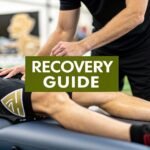
Why Sports Injury Massage Actually Works
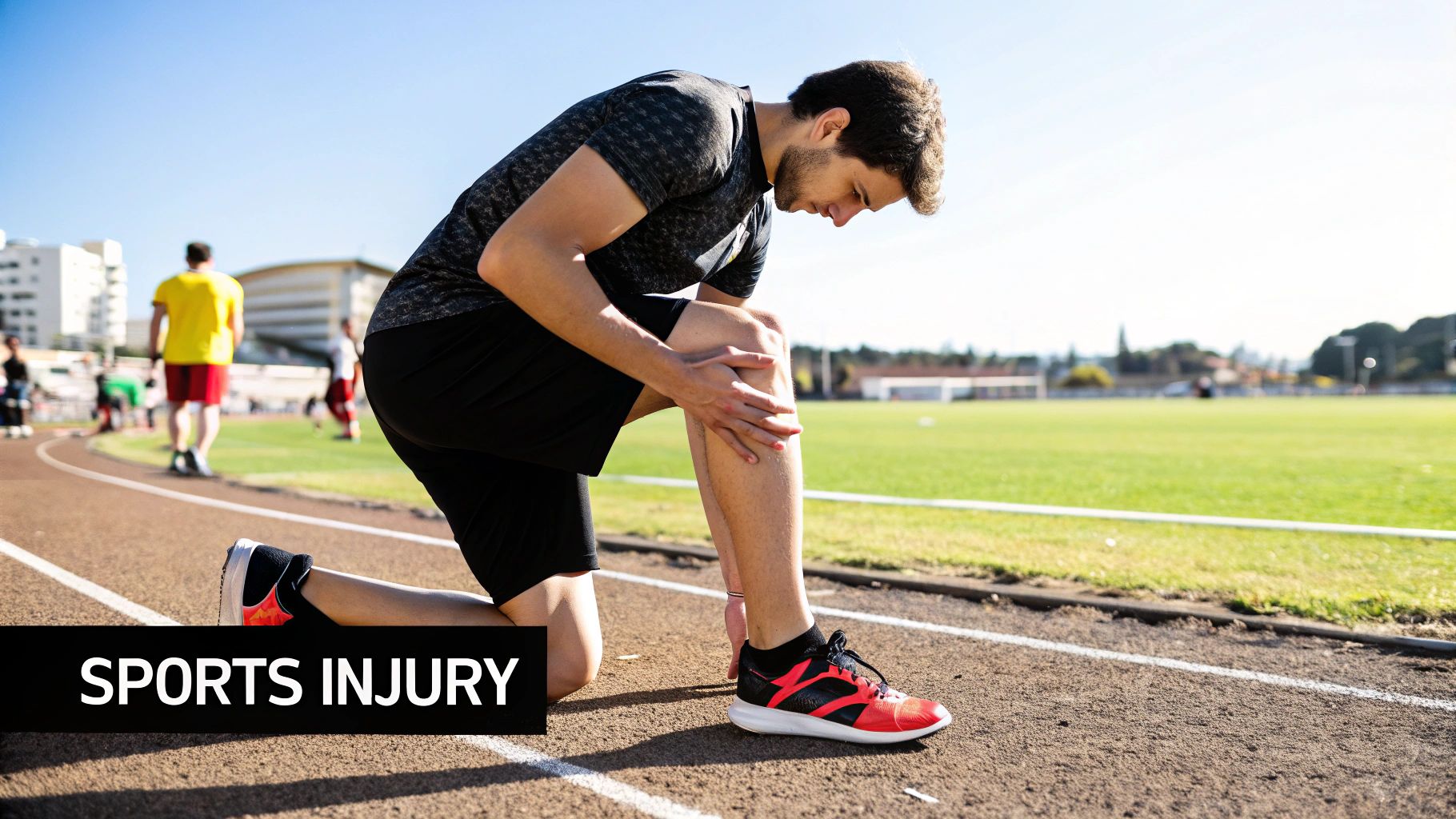
It’s easy to think of massage as a simple luxury, something you treat yourself to on a spa day. But when a sports injury puts you on the sidelines, that view doesn't tell the whole story. A targeted massage for sports injuries isn’t about simple relaxation; it’s a strategic and effective tool for recovery. Think of it less like a gentle comfort and more like a skilled mechanic fine-tuning a high-performance engine. While rest is crucial, skilled hands can actively speed up the body's repair work, getting to the root of pain and dysfunction in a way that just waiting it out cannot.
The power of this approach is more than just talk; it's rooted in how your body responds to specific pressure and manipulation. A specialized massage helps you regain function faster than rest alone, making it a key part of modern athletic rehabilitation. In fact, its importance has been recognized worldwide. A significant review of 37 different studies confirmed its effects on pain management, nervous system regulation, and the biochemical processes of healing. You can explore these findings in more detail on the International Journal of Therapeutic Massage & Bodywork to see the science behind it.
Realigning Your Body’s Repair System
After an injury, imagine your muscles and connective tissues are like a tangled bundle of ropes—knotted, tight, and unable to work correctly. A sports injury massage acts to carefully untangle these knots. This process goes beyond relieving tension; it triggers several key functions that encourage healing and help prevent future issues.
This focused approach helps to:
- Boost Circulation: The pressure from the massage acts like opening a vital supply line, encouraging more blood to flow to the injured area. This delivers a fresh wave of oxygen and nutrients that damaged tissues need to rebuild themselves.
- Reduce Swelling: By manually stimulating the lymphatic system, a massage can help drain excess fluid and calm inflammation, which is often a major source of pain and limited movement.
- Break Down Scar Tissue: When the body heals, it often creates scar tissue that is stiff and can restrict movement. Therapeutic massage helps to break down these adhesions, improving flexibility and helping you regain a normal range of motion.
Beyond the Physical Touch
The benefits also reach deep into your nervous system. A skilled therapist can essentially help "retrain" your body’s pain signals. By stimulating nerve receptors in the muscle and skin, the massage can interrupt the pain messages traveling to your brain. This gives the muscle a chance to relax, allowing the healing cycle to start without the constant distraction of pain.
This is why sports massage therapy is a game-changer for recovery. It's not just about feeling better in the moment. It's about creating the ideal physiological environment for your body to heal itself more effectively. This intentional, science-backed method is what separates true therapeutic work from a standard relaxation massage.
The Science Behind Your Body's Healing Response
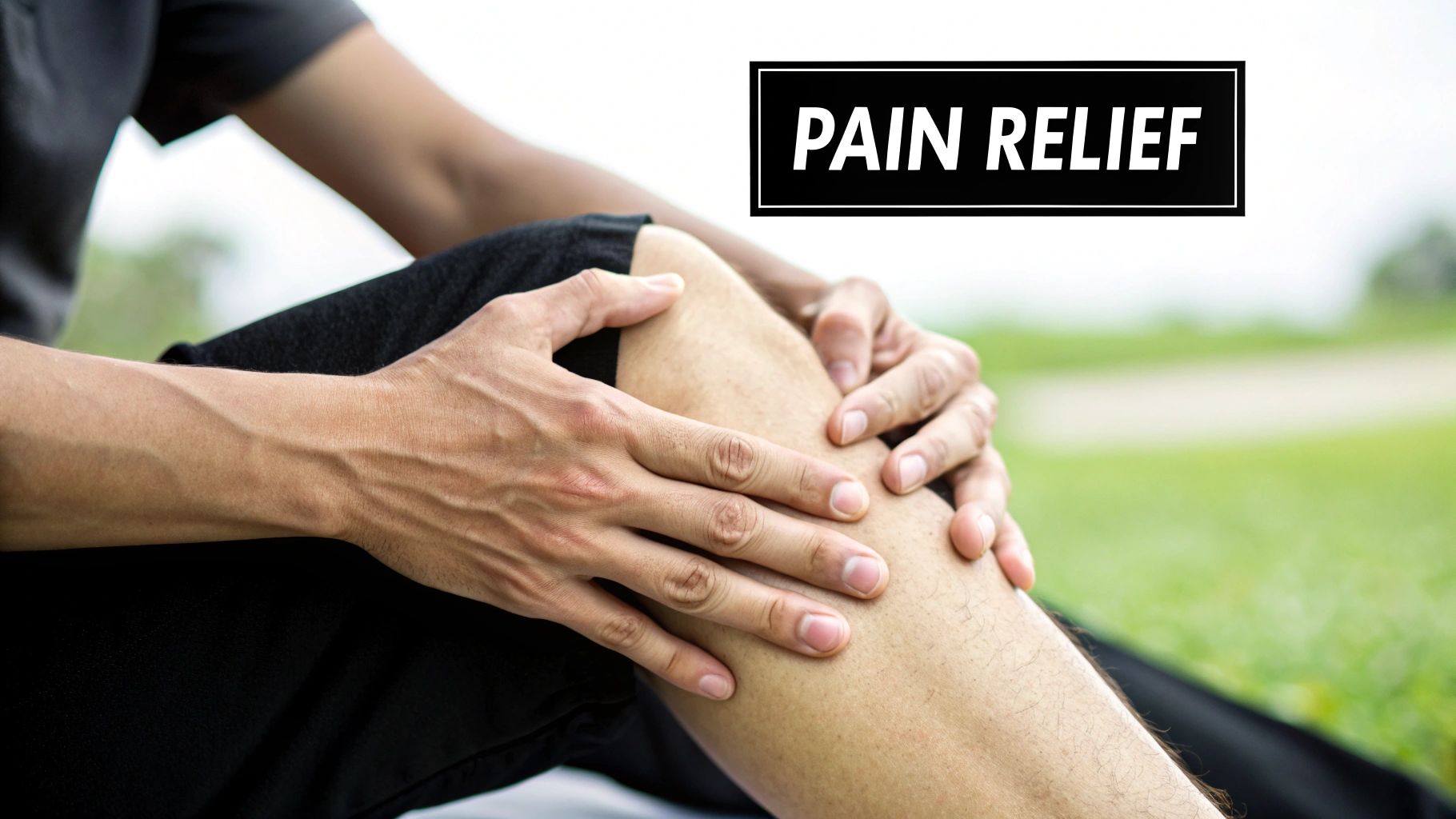
The immediate relief you feel from a massage for sports injuries isn’t just a pleasant sensation; it’s the result of powerful biological processes happening right under your skin. When you get hurt, your nervous system sends out a flood of pain signals. Think of it as your body's alarm system, firing off urgent alerts to your brain that something is wrong. The right therapeutic touch acts as a skilled negotiator, calming this alarm down.
This quick relief is explained by a concept called the pain gate control theory. Picture the nerve pathways to your brain as a series of gates. After an injury, the gates for pain signals swing wide open. The pressure and movement from a massage create a different signal—touch—which travels on faster nerve fibers. These touch signals race to the gate and effectively close it before many of the slower pain signals can pass through. This is why you often feel pain melt away during a session; the massage is literally running interference.
Shifting from “Fight-or-Flight” to “Rest-and-Digest”
Beyond simply blocking pain, therapeutic touch triggers a fundamental shift in your entire nervous system. It helps your body switch from the sympathetic nervous system (the "fight-or-flight" response) to the parasympathetic nervous system (the "rest-and-digest" state). When you're injured and in pain, your body is on high alert, ready for a threat. A targeted massage signals that it’s safe to stand down and focus on recovery.
This calming shift is crucial for healing. It lowers stress hormones like cortisol and creates a state of deep relaxation where your body's natural repair crews can get to work. With the alarm bells silenced, other vital healing processes can begin. The physical manipulation of muscles boosts blood flow, delivering a fresh supply of oxygen and nutrients to the damaged tissues. At the same time, it improves lymphatic drainage, your body's internal cleaning system that removes waste products and reduces swelling. It's like a cleanup crew clearing debris from a worksite so the rebuilding can start.
How Massage Kickstarts Your Internal Healing Cascade
The benefits are further amplified by the release of your body's own powerful chemicals. As you relax and circulation improves, your brain is prompted to produce endorphins—natural chemicals that act as painkillers and mood elevators. This creates a positive feedback loop: the massage eases pain through the pain gate mechanism, which in turn triggers the release of more pain-relieving endorphins, further calming the area.
To help you see how these different actions work together, this table breaks down the key massage mechanisms and their direct benefits for injury recovery.
Massage Mechanisms vs. Healing Benefits
Comparison of different massage mechanisms and their corresponding healing effects on sports injuries
| Massage Mechanism | Physiological Effect | Injury Benefit | Recovery Timeline |
|---|---|---|---|
| Mechanical Pressure | Boosts local blood flow and fluid exchange. | Delivers nutrients; clears metabolic waste. | Immediate to short-term |
| Nerve Stimulation | Activates the pain gate and parasympathetic system. | Reduces immediate pain; lowers stress. | Immediate to short-term |
| Myofascial Manipulation | Breaks down adhesions and knots in connective tissue. | Restores flexibility and normal movement patterns. | Short-term to long-term |
| Systemic Relaxation | Triggers the release of endorphins. | Elevates mood and provides natural pain relief. | Short-term to long-term |
This table shows that while some benefits like pain relief are immediate, others like restoring flexibility happen over time, highlighting the value of consistent therapy.
Ultimately, a massage for sports injuries is a way to communicate directly with your body’s built-in healing systems. By applying the right techniques, a therapist can guide these systems to work more efficiently, speeding up your return to the activities you love.
Choosing the Right Massage Technique for Your Injury
Stepping into the world of massage for sports injuries can feel a bit like opening a mechanic's toolbox. You wouldn't use a sledgehammer to fix a sensitive engine part, and in the same way, a therapist won't apply the same technique to a torn hamstring as they would for chronic shoulder tightness. Using the wrong approach at the wrong time can actually slow down your recovery or, worse, cause more harm.
To get the most out of your treatment, it helps to understand the different "tools" a therapist has at their disposal. Each massage style is built to solve a specific problem within your muscles and the web of connective tissues surrounding them. Think about your injury: is it a deep, stubborn knot? A widespread feeling of tightness? Or a sharp, specific point of pain? The answer helps guide the therapist to the right solution.
Matching the Technique to the Problem
Let's break down some of the most common and effective techniques used in sports injury recovery. Each one works on a different level within the body, offering unique benefits for different types of injuries.
-
Deep Tissue Massage: This is the powerful wrench in the toolkit, designed to reach the deeper layers of muscle and connective tissue. Using firm pressure and slow, deliberate strokes, it's perfect for breaking up the chronic muscle tension and adhesions—those stubborn "knots"—that cause pain and restrict your movement. It's especially useful for nagging issues like persistent lower back pain or tightness in your calves.
-
Myofascial Release: Picture your muscles wrapped in a thin, cling-film-like layer called fascia. After an injury or overtraining, this fascia can become tight and bunched up, pulling on your muscles and causing pain, sometimes in completely different areas. Myofascial release uses gentle, sustained pressure to slowly stretch and "unstick" these fascial layers, restoring smooth movement and relieving that locked-up feeling. It's a go-to for problems like IT band syndrome or plantar fasciitis.
-
Trigger Point Therapy: Have you ever pressed on a sore spot in a muscle and felt a jolt of pain somewhere else? That’s a trigger point—a small, hyper-irritable knot. This therapy zeros in on these spots, applying direct, focused pressure to deactivate them. By interrupting the pain signals and encouraging the muscle to let go, it can offer quick relief from referred pain, like a knot in your shoulder that causes headaches.
The value of these targeted approaches is well-known among athletes. In fact, research shows that 99% of athletes who receive sports massage find it helpful and would recommend it. The most commonly treated areas—the thighs (56%), glutes (43%), hamstrings (37%), and back (37%)—are often ground zero for sports-related strain, making these therapies vital for recovery. You can read more about these findings in this massage therapy position statement.
When to Choose a Gentler Approach
While intense techniques are great for chronic issues, they aren't always the answer, especially for new injuries. If you're dealing with an acute injury, like a freshly pulled muscle that's still inflamed, a gentler touch is required.
This is where Swedish massage comes in. Known for its long, flowing strokes, it improves circulation and promotes relaxation without aggravating the inflamed tissue. It helps calm the nervous system and can gently reduce swelling, preparing your body for more focused work once the initial healing phase has passed.
Perfect Timing: When to Get a Massage for Maximum Recovery
Understanding when to get a massage for sports injuries is just as important as the technique itself. Think of your body’s recovery process like tending to a garden. You wouldn't water a freshly planted seed the same way you'd care for a mature plant. Applying the right treatment at the right time helps your body heal stronger, while the wrong approach can cause a setback.
The first 48-72 hours after an injury are known as the acute inflammatory phase. This is when your body rushes healing cells to the site, causing swelling and sensitivity. Applying deep pressure during this window is counterproductive—it can worsen inflammation and pain. Instead, the focus should be on gentle methods that calm the area and encourage fluid drainage.
Navigating the Three Phases of Healing
Your body doesn't just flip a switch from "injured" to "healed." It follows a predictable, three-stage process. Matching the massage style to your current healing phase is the key to a successful recovery.
- Inflammatory Phase (First 2-3 Days): The main goal is to manage pain and swelling without disrupting the body's natural first response. Extremely light strokes, such as lymphatic drainage, performed away from the direct injury can help reduce the fluid buildup that causes pressure and discomfort.
- Repair Phase (Day 3 to 6 Weeks): Once the initial swelling goes down, your body begins its construction project, laying down new collagen fibers to mend the damaged tissue. This is the perfect time for more targeted techniques like cross-fiber friction, which helps these new fibers form in a strong, organized pattern, preventing stiff scar tissue. Gentle stretching can also be introduced to improve mobility.
- Remodeling Phase (6 Weeks to 12+ Months): In the final stage, the body works to strengthen and refine the repaired tissue, making it more like the original. This is when deep tissue massage and myofascial release truly shine. These techniques break down any lingering adhesions and restore the tissue's full strength and flexibility. For runners struggling with persistent issues, you can find specific strategies in our guide on sports massage for runners.
To help you and your therapist decide on the best course of action, this table outlines which techniques are most appropriate for each phase of healing.
| Injury Phase | Timeframe | Recommended Techniques | Frequency | Expected Outcomes |
|---|---|---|---|---|
| Inflammatory Phase | First 48–72 hours | Very light lymphatic drainage, gentle effleurage (away from the injury) | 1 session (if any) | Reduced swelling, pain management, promotion of healing environment |
| Repair Phase | Day 3 to 6 weeks | Gentle cross-fiber friction, trigger point therapy, light stretching | 1-2 times per week | Improved circulation, prevention of scar tissue, increased range of motion |
| Remodeling Phase | 6 weeks to 12+ months | Deep tissue massage, myofascial release, active release techniques | 1 time per week or bi-weekly | Breakdown of adhesions, restored tissue elasticity, improved muscle function |
This guide shows how massage evolves from a gentle, supportive role in the early days to a more intensive, corrective tool as your body rebuilds and strengthens itself over time.
When to Absolutely Avoid Massage
While massage is a fantastic recovery tool, there are specific situations where it should be avoided. These are known as contraindications, and ignoring them can be harmful.
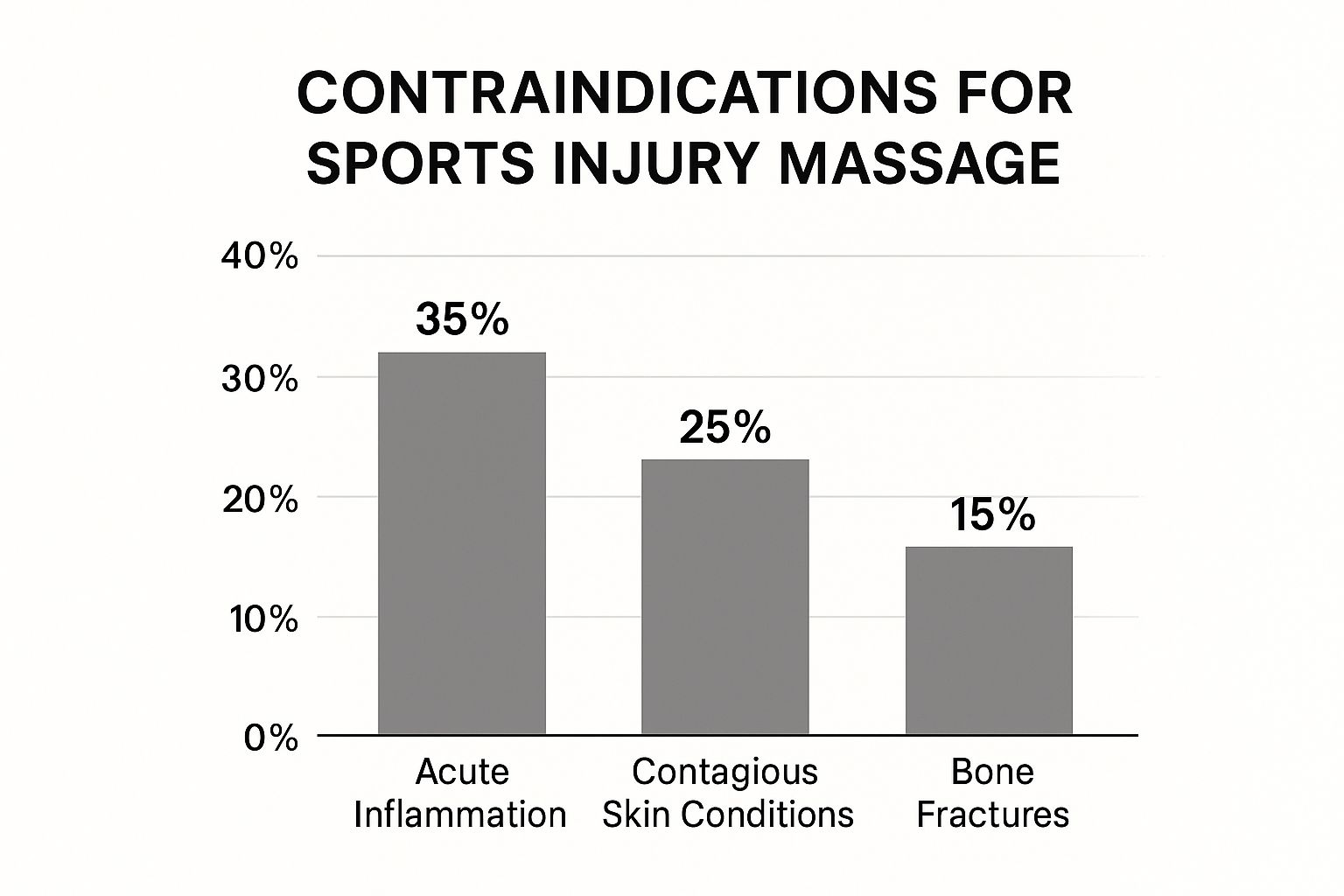
As the data clearly shows, acute inflammation is the number one reason to postpone a massage, accounting for 35% of cases. This highlights how critical it is to let initial swelling calm down before applying direct pressure. Always be transparent with your massage therapist about your injury's timeline and any other health conditions to ensure your treatment is both safe and effective.
Real Recovery Stories: Athletes Who Beat the Odds
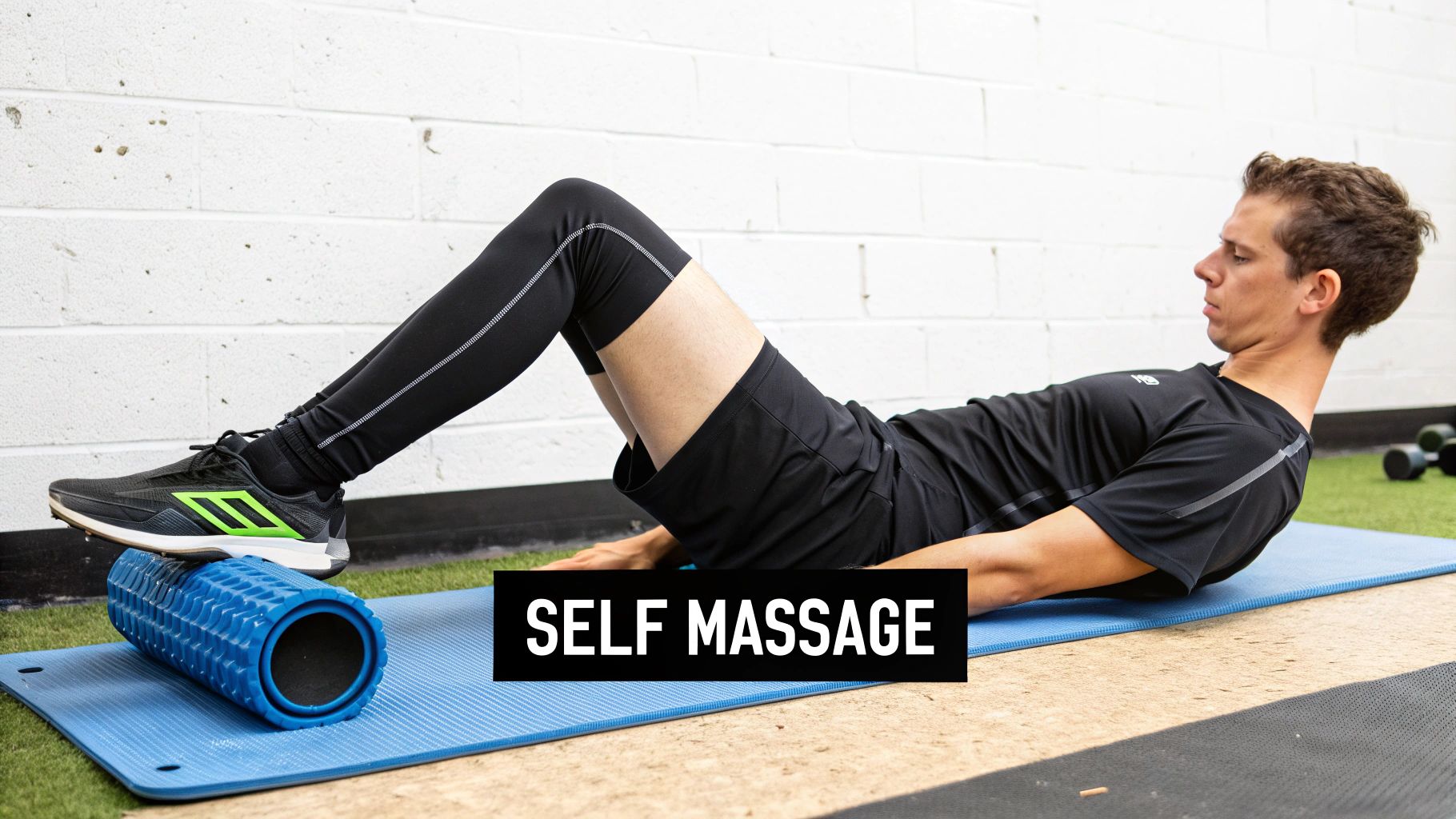
While the science is clear, the true impact of massage for sports injuries is best told through the stories of real athletes. These aren't just feel-good anecdotes; they are powerful examples of how skilled bodywork can turn a major setback into a comeback story. From elite athletes avoiding career-ending surgery to everyday people getting back to the activities they love, these accounts show what’s possible when science-backed techniques are applied with expertise.
Take the story of a competitive cyclist who was sidelined by chronic iliotibial (IT) band syndrome. After months of pain and little progress with just rest and stretching, her season was essentially written off. But then, she started a focused treatment plan of myofascial release and deep tissue massage. By breaking down the stubborn knots and adhesions along her outer thigh, the therapy restored healthy movement and eased the painful friction at her knee. Within weeks, she was back on her bike, competing at a higher level than before her injury.
From Weekend Warriors to Aging Competitors
This kind of success isn't just for professionals. A weekend tennis player who suffered a painful rotator cuff strain thought his days on the court were over. He faced a long and uncertain recovery. By combining trigger point therapy with specific stretches, his therapist was able to release the tight knots in his shoulder and back. This method didn't just mask the pain; it fixed the underlying muscle imbalance, giving him back his range of motion and his confidence to play again.
These personal experiences are backed by a broad consensus among athletes. A study looking at athletes' opinions on sports massage therapy found that over 90% believe it boosts blood flow, which in turn helps reduce muscle fatigue. This is a key element for both recovery and preventing future injuries. You can read more about these findings in the full AMTA position statement.
The Measurable Impact on Recovery
Beyond individual stories, research shows the clear advantages of adding massage to a recovery plan. Studies consistently demonstrate that therapeutic massage can:
- Accelerate Recovery Time: Evidence indicates that regular massage can shorten recovery time by up to 40%, allowing athletes to return to their sport much sooner than with rest alone.
- Improve Mobility: Massage is often more effective than static stretching for improving range of motion because it releases the tight connective tissue (fascia) that limits movement.
- Lower Re-Injury Rates: By breaking down scar tissue and correcting muscle imbalances, massage for sports injuries helps ensure the repaired tissue is both strong and flexible. This greatly reduces the chances of the same injury happening again.
These outcomes are why more sports medicine doctors, physical therapists, and athletic trainers see massage not just as an extra but as a core part of an effective rehabilitation program.
The Expanding World of Sports Massage Therapy
The recent growth in sports massage availability is more than just a passing trend. It's a direct response to clear results and a rising demand from athletes at all levels. As more people embrace active lifestyles, the need for effective treatment for sports injuries has powered a significant increase in specialized therapists and new methods. This growth makes high-quality massage for sports injuries more accessible than ever.
This expansion is happening for one simple reason: it works. The global massage therapy service market was valued at about USD 18.25 billion in 2023, and the sports massage segment is expected to grow at a compound annual growth rate of 9.4% through 2030. This growth shows the increasing confidence athletes have in this therapy for both recovery and performance. You can find more details about this market expansion on Grandview Research. This industry progress means better access to care, stricter training standards for therapists, and more affordable treatment options for you.
What This Growth Means for You
The expansion of sports massage offers real benefits for anyone recovering from an injury or trying to prevent one. With more qualified therapists in the field, it's becoming much easier to find a professional who specializes in your particular sport or injury. This specialization ensures the care you receive isn't generic but is designed specifically for your body's unique demands.
This growth has also driven progress in training and technology. Here’s what you can expect:
- New Certification Programs: Therapists are now obtaining advanced certifications focused on athletic injuries, making sure they have a deep understanding of anatomy and recovery science.
- Integration with Healthcare: Sports massage is increasingly viewed as a key part of a complete healthcare plan. Therapists are now working alongside physical therapists and doctors to create a unified recovery strategy.
- Emerging Technologies: New tools are helping therapists deliver even better results. For instance, percussion therapy devices can supplement manual techniques to release deep muscle tension. Advanced assessment tools also help therapists spot muscle imbalances before they become serious injuries.
While navigating a larger field of providers might seem difficult, it ultimately gives you the power to find the perfect match. By understanding the benefits of sports massage, you can ask the right questions and select a therapist who can truly support your recovery goals. The increasing professionalization of the industry ensures you have more high-quality options than ever to help you heal and get back in the game.
Your Action Plan for Sports Injury Recovery Success
Now that you understand the different techniques and the best times to use them, let's build a recovery strategy that actually works. A solid plan for massage for sports injuries is more than just general tips; it’s a personalized roadmap for your specific injury, training demands, and future goals. The foundation of this plan is finding the right professional who can guide you through recovery.
Think of your therapist as a specialized coach for your healing journey. You need someone with the right expertise, background, and communication skills to get you back in the game. Starting your search by asking the right questions is crucial for building a strong partnership and ensuring you get effective care from day one.
Finding Your Ideal Therapist
Choosing a qualified practitioner is the most important step in your action plan. Not every massage therapist focuses on sports-related injuries, so it's vital to find someone with a specific background in this area. When you're looking at potential therapists, be ready with some direct questions to see if they're the right fit.
Here are a few key questions to start with:
- What is your experience with my specific injury? (For example, a rotator cuff tear or shin splints)
- What certifications or extra training do you have in sports massage or injury rehab?
- How do you work with other healthcare providers, like physical therapists or doctors?
- What can I expect during our first session and in future treatments?
It's just as important to know what to watch out for. Certain red flags might suggest a practitioner isn't suited to treat your sports injury.
Be wary of a therapist who:
- Promises a complete "cure" after only one or two sessions.
- Brushes off the importance of a diagnosis from a doctor or physical therapist.
- Applies the same generic approach to every client and injury.
- Causes a lot of pain without a clear therapeutic reason and open communication.
Building a Consistent and Effective Treatment Plan
Once you've found the right therapist, the next step is to create a treatment plan you can stick with. Consistency is essential. Occasional sessions are much less helpful than a structured program. Work with your therapist to figure out the best frequency and length for your sessions, based on where you are in the healing process and how you're progressing.
Set realistic goals for your recovery. Healing is a process that takes time, and you might have ups and downs along the way. Maintain open communication with your therapist, giving them feedback during and after each session. This allows them to adjust their techniques and pressure to make your massage for sports injuries treatment as effective as possible. By being an active participant, you turn passive treatment into a powerful, collaborative effort that helps you return to peak performance safely.
Ready to create your personalized recovery plan? The expert therapists at La Moon Massage and Facial are committed to helping athletes like you heal and get back to what you love. Book your appointment with us today and start on your path to success.
